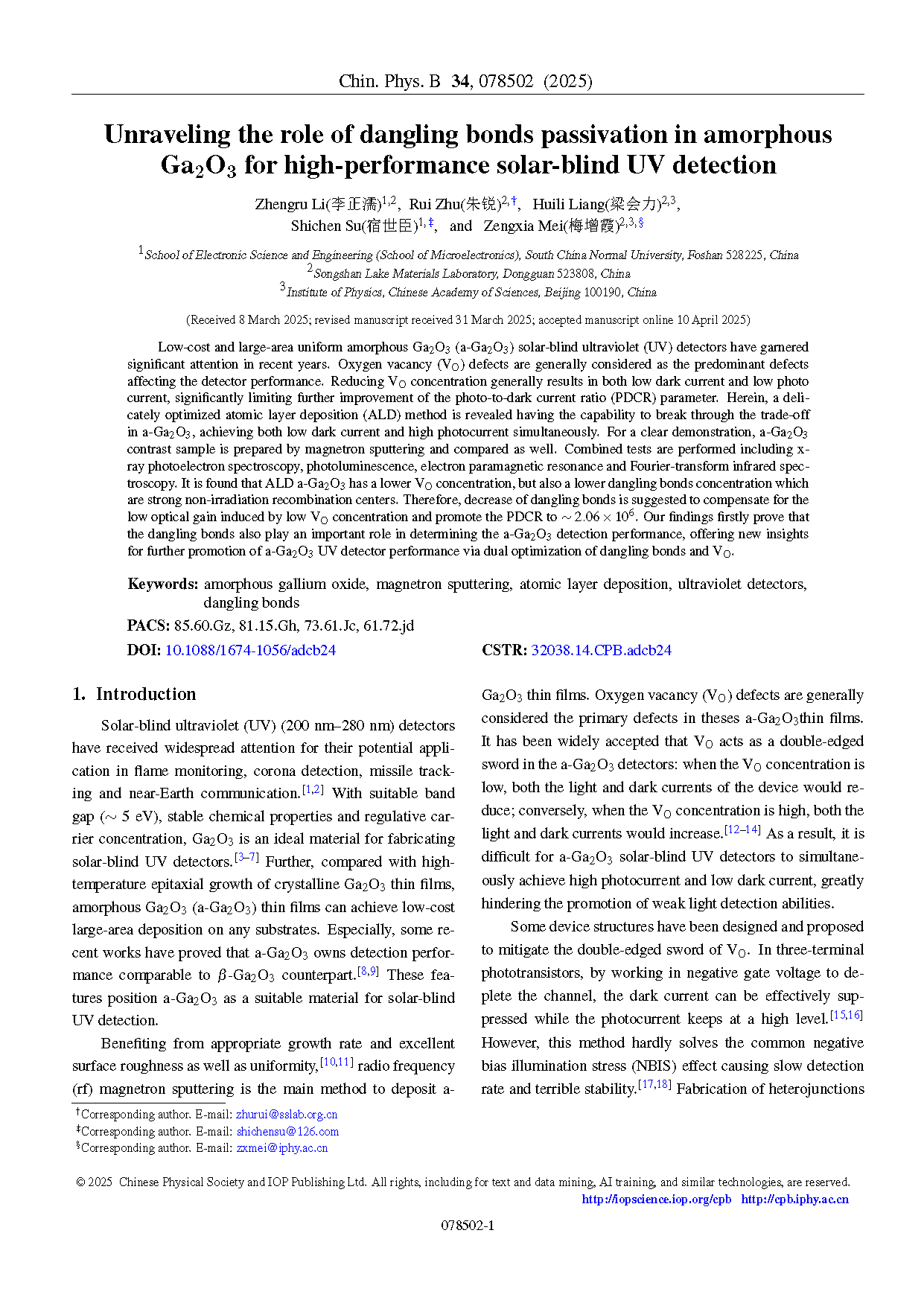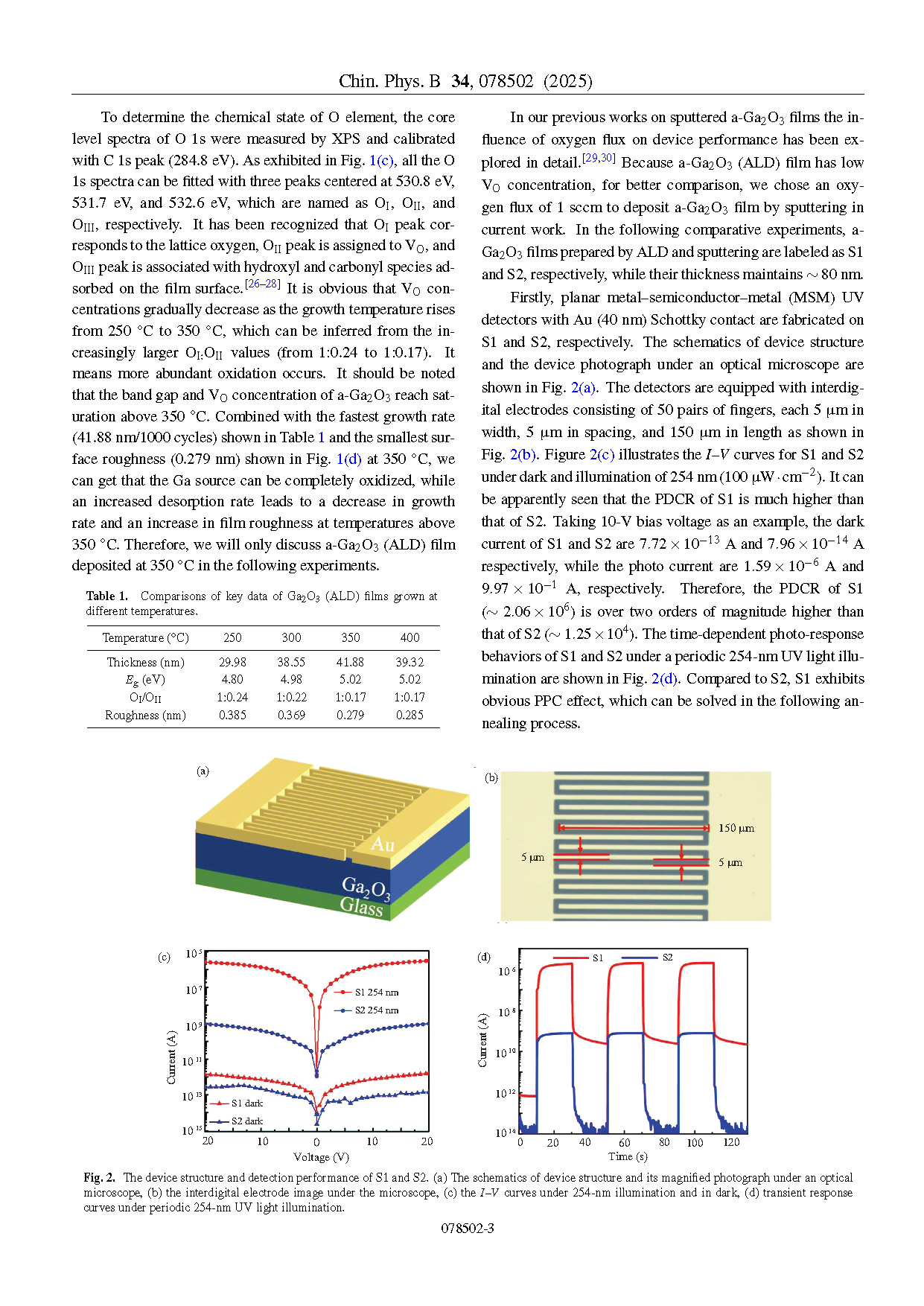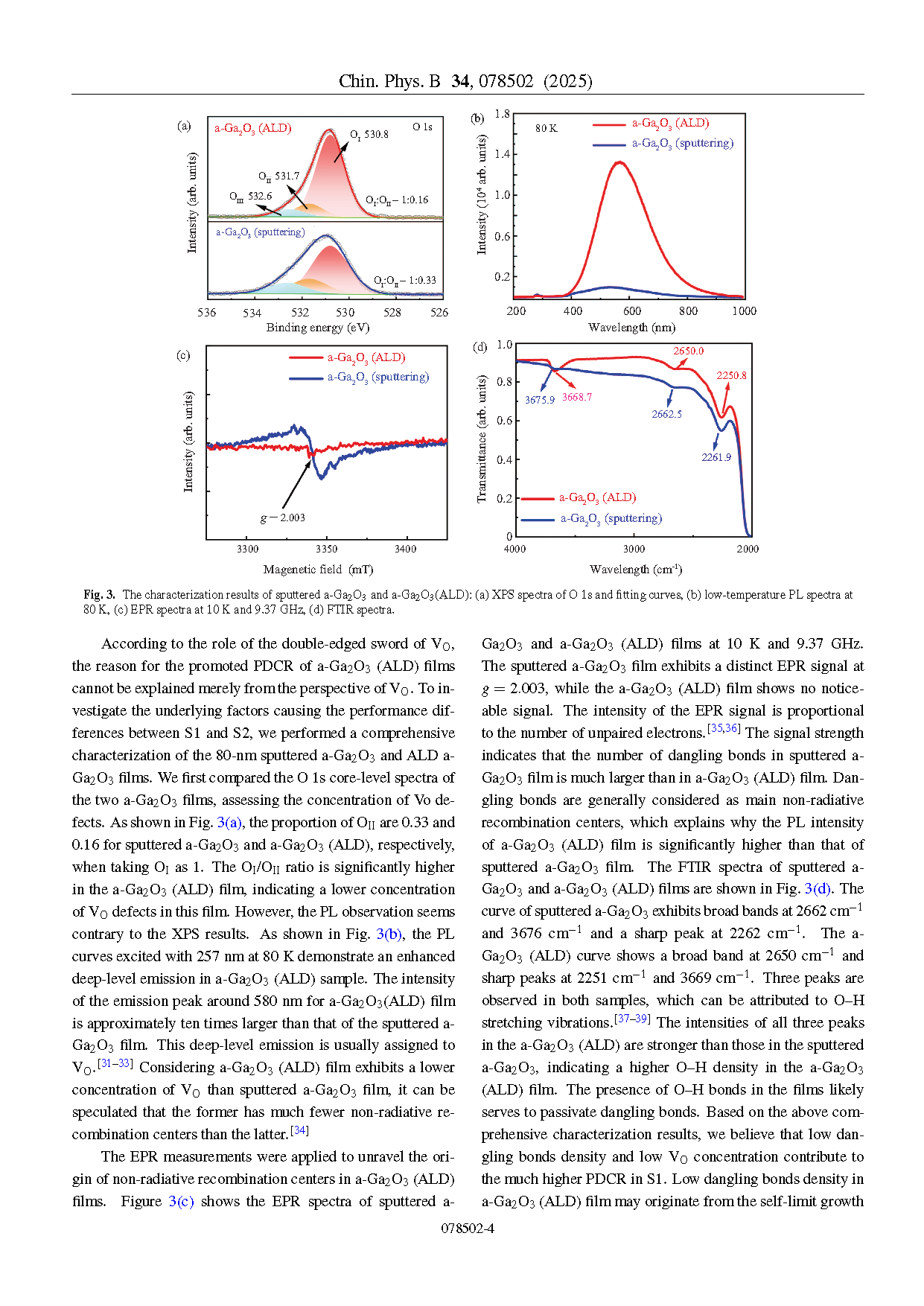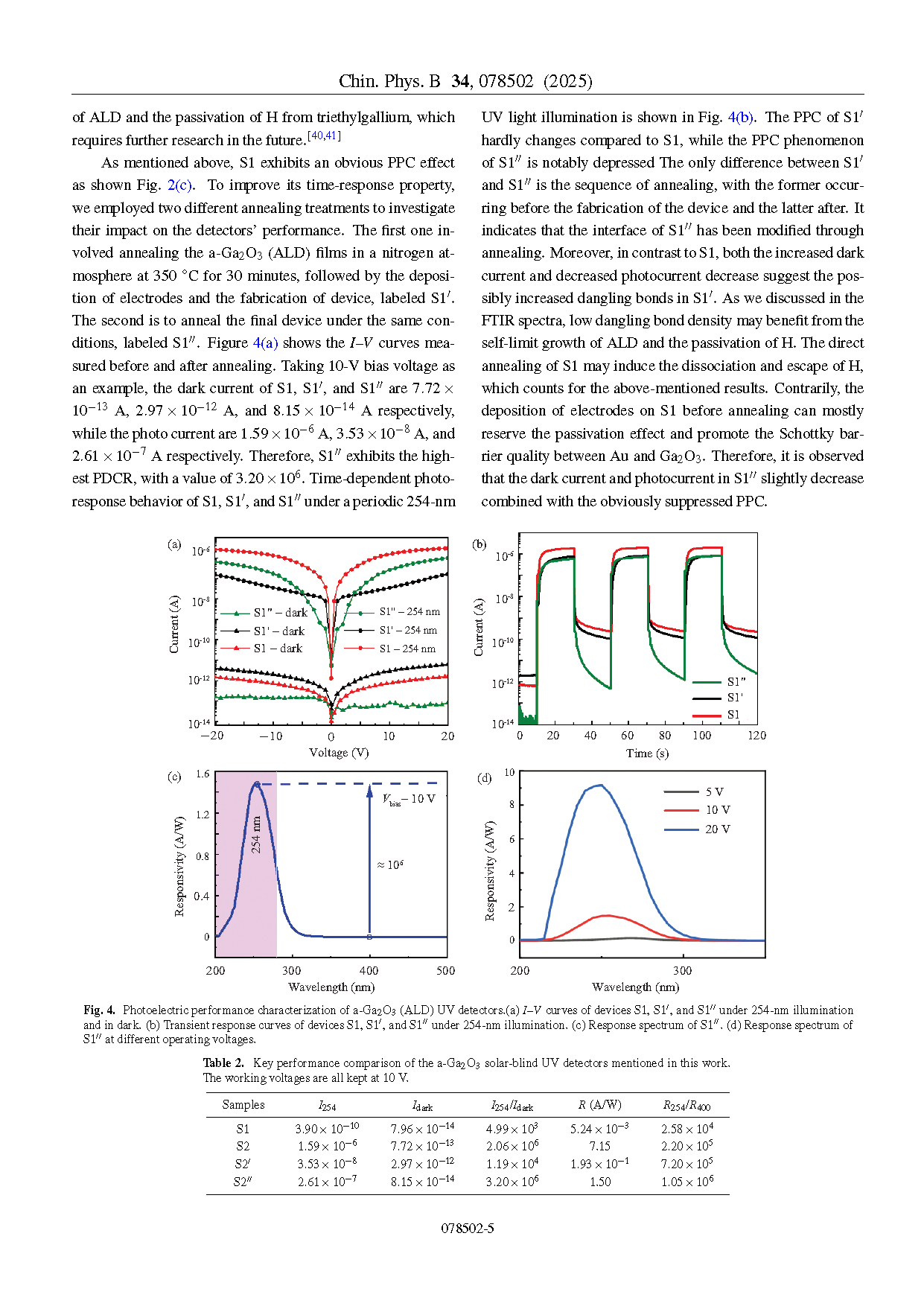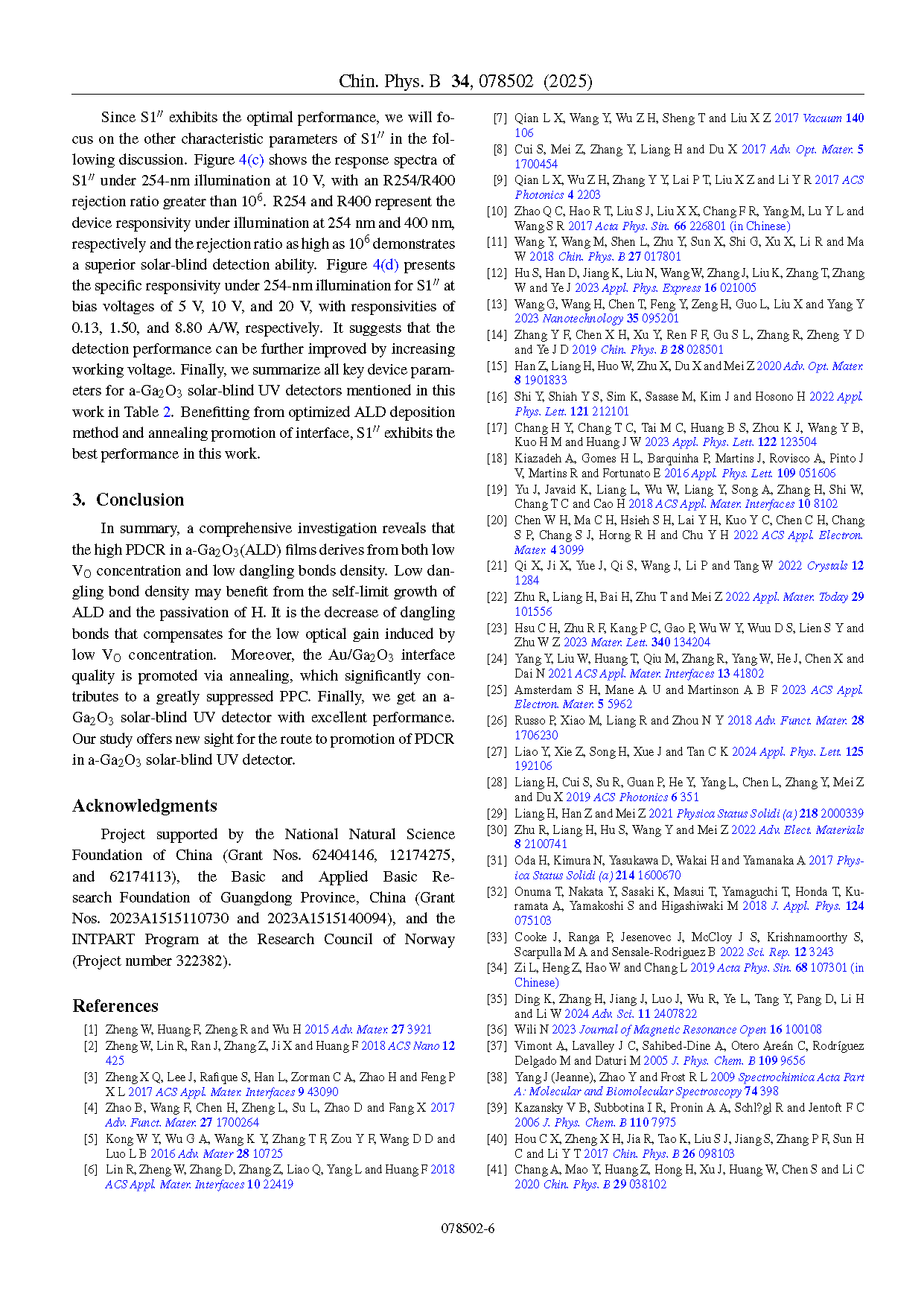
【Domestic Papers】Unraveling the role of dangling bonds passivation in amorphous Ga₂O₃ for high-performance solar-blind UV detection
日期:2025-08-13阅读:149
Researchers from the Songshan Lake Materials Laboratory have published a dissertation titled "Unraveling the role of dangling bonds passivation in amorphous Ga2O3 for high-performance solar-blind UV detection" in Chinese Physics B.
Project Support
Project supported by the National Natural Science Foundation of China (Grant Nos. 62404146, 12174275, and 62174113), the Basic and Applied Basic Research Foundation of Guangdong Province, China (Grant Nos. 2023A1515110730 and 2023A1515140094), and the INTPART Program at the Research Council of Norway (Project number 322382).
Background
Solar-blind ultraviolet (UV) (200 nm–280 nm) detectors have received widespread attention for their potential application in flame monitoring, corona detection, missile tracking and near-Earth communication. With suitable band gap (∼ 5 eV), stable chemical properties and regulative carrier concentration, Ga2O3 is an ideal material for fabricating solar-blind UV detectors. Further, compared with high-temperature epitaxial growth of crystalline Ga2O3 thin films, amorphous Ga2O3 (a-Ga2O3) thin films can achieve low-cost large-area deposition on any substrates. Especially, some recent works have proved that a-Ga2O3 owns detection performance comparable to β-Ga2O3 counterpart. These features position a-Ga2O3 as a suitable material for solar-blind UV detection.
Abstract
Low-cost and large-area uniform amorphous Ga2O3 (a-Ga2O3) solar-blind ultraviolet (UV) detectors have garnered significant attention in recent years. Oxygen vacancy (VO) defects are generally considered as the predominant defects affecting the detector performance. Reducing VO concentration generally results in both low dark current and low photo current, significantly limiting further improvement of the photo-to-dark current ratio (PDCR) parameter. Herein, a delicately optimized atomic layer deposition (ALD) method is revealed having the capability to break through the trade-off in a-Ga2O3, achieving both low dark current and high photocurrent simultaneously. For a clear demonstration, a-Ga2O3 contrast sample is prepared by magnetron sputtering and compared as well. Combined tests are performed including x-ray photoelectron spectroscopy, photoluminescence, electron paramagnetic resonance and Fourier-transform infrared spectroscopy. It is found that ALD a-Ga2O3 has a lower VO concentration, but also a lower dangling bonds concentration which are strong non-irradiation recombination centers. Therefore, decrease of dangling bonds is suggested to compensate for the low optical gain induced by low VO concentration and promote the PDCR to ∼2.06 × 106. Our findings firstly prove that the dangling bonds also play an important role in determining the a-Ga2O3 detection performance, offering new insights for further promotion of a-Ga2O3 UV detector performance via dual optimization of dangling bonds and VO.

Fig. 1. Characteristics of Ga2O3 (ALD) films grown at different temperatures. (a) XRD curves, (b) transmittance spectra. The inset shows the plot of (αhν)2 versus hν for these Ga2O3 (ALD) films. (c) O 1s core level spectra. (d) The A FM topography of these Ga2O3 (ALD) films surface.
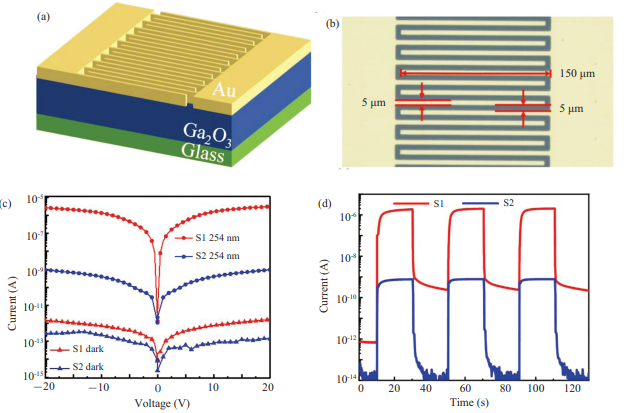
Fig. 2. The device structure and detection performance of S1 and S2. (a) The schematics of device structure and its magnified photograph under an optical microscope, (b) the interdigital electrode image under the microscope, (c) the I–V curves under 254-nm illumination and in dark, (d) transient response curves under periodic 254-nm UV light illumination.
DOI:
doi.org/10.1088/1674-1056/adcb24
